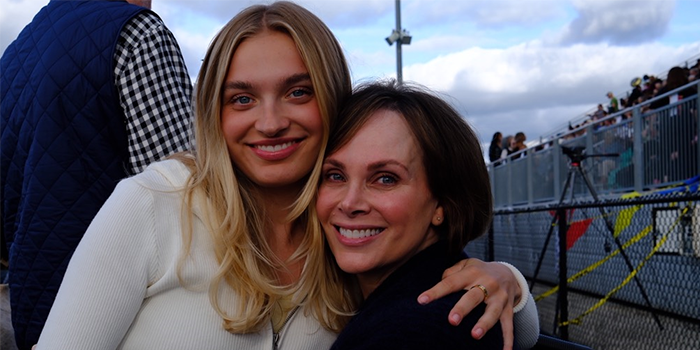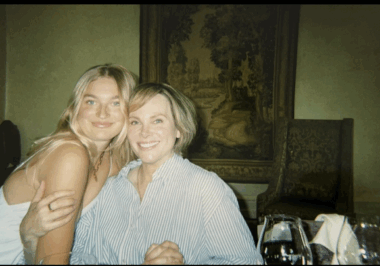Living in Love: Angie and Emily’s Story of Strength, Laughter, and Family Through ALS

This content is sponsored by Tanabe Pharma America, Inc. (TPA) and is intended for US audiences only. Any other present or future content posted by the contributor, not expressly designated as “Tanabe Pharma America, Inc. – sponsored content” is not associated with TPA.
The information provided here is general in nature and is not intended to be a substitute for professional medical advice, diagnosis, or treatment. You are strongly encouraged to seek the advice of your doctor or other qualified healthcare provider with any questions regarding a medical condition.
When Angie was diagnosed with amyotrophic lateral sclerosis (ALS) in 2022 at the age of 52, her world shifted overnight. A devoted mother of six and grandmother to three—with another grandbaby on the way—Angie’s role suddenly changed from being a caregiver to the one needing care.
“I’ve worked since I was 15, and then I was a stay-at-home mom until I was 49 or 50,” she recalled. “So, it was a challenge. It’s a big, big transition, losing independence.”
At the heart of her new reality is her daughter Emily, 23, who stepped into a caregiving role for her mother. Family caregiving spans across all generations, including Boomers, Gen-X, Gen-Z and Millennials.[1]
The two now spend nearly every day together, navigating their new normal. More than one in five Americans serve as a caregiver, or care partner, for a loved one living with a serious illness or disability.[1]
“I tell Emily, ‘I don’t want you to do this,’” Angie said. “But she’s very, very sweet. And she’ll say ‘No, I really enjoy it.’ I’m so grateful for that.”
Finding Joy in the Everyday
While living with ALS has brought many physical limitations, Angie and her family have found new meaning in simple, shared moments, whether at home, within the community or—a personal favorite—at the beach.
“We like going to the supermarket and just zooming around and finding some goodies,” Angie said with a laugh.
They also make time for small self-care rituals, which offer comfort and connection. Emily shared, “Sometimes we do eye patches and face masks, and we love listening to music because it just makes us happy and we’re able to dance, be goofy and have fun.”
Even on the tough days, when her energy is low or mobility is limited, Angie is uplifted by the family surrounding her. Family barbecues, visits from grandkids and a home filled with laughter are a constant reminder that the family is united.
Facing the Hard Stuff—Together
ALS has added layers of complexity as Angie can no longer conduct her daily life as she used to.
“I can’t drive anymore. I can’t shower alone anymore. That loss of independence? That’s hard,” she said. “I feel badly, even though nobody’s making me feel that way.”
Emily, too, acknowledges the daily challenges of caregiving. “Everything is like a chore now. If she wants to go to the bathroom, she can’t just go by herself. She has to announce that she wants to go to make sure someone else goes with her,” she explained.
Still, the emotional center of their bond remains strong. “I would just rather spend time with her,” Emily said. “It has really opened all of our eyes… you can’t take anything for granted.”

Holding on to What Matters
Despite the loss ALS brings, Angie remains grounded in what she still has: her family, her memories and the love that fills her home. Weekly family dinners and evenings around the firepit are more than just traditions—they’re reminders that joy can still live alongside grief.
Angie says, “I feel really lucky for my family. They get along, they have fun together and they’re all really close.” Even when accessibility makes things more complicated—like navigating uneven ground or getting in and out of the house—her family shows up, finds a way and makes it worth it. “It’s still fun that we’re able to be all together and just enjoy each other’s presence.”
Angie knows time is precious. But rather than living in fear of what’s to come, she and Emily stay anchored in the present—grateful for the moments they still get to share. “Right now, I want to have those good memories with them,” Angie said. “I just think the memories are a big thing.”
Not in This Alone
Caring for someone with ALS can present emotional, physical and logistical challenges. Still, Angie and Emily encourage those newly diagnosed not to face it alone—support is available.
As Angie says, “try not to isolate yourself.” Talk to your doctor, join a support group, connect with others who understand what you’re going through and explore online resources for more information.
A good place to start is ALSPathways.com/support. The site offers helpful information on ALS including symptoms and their impact, tools for assessing function, tips for daily management, caregiver support, educational webinars and disease tracking tools.
Angie reminds those living with ALS to “take it one day at a time and don’t think too much about what’s coming next.”
[1]AARP. Caregiving in the United States. AARP Public Policy Institute.
https://www.aarp.org/pri/topics/ltss/family-caregiving/caregiving-in-the-united-states/
CNP-TPA-US-0008 12/25






